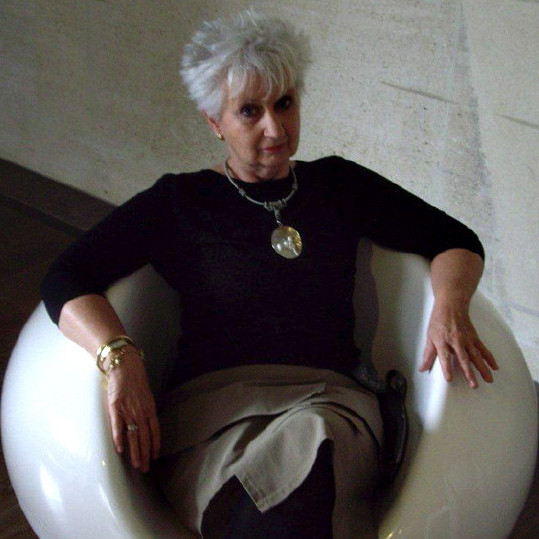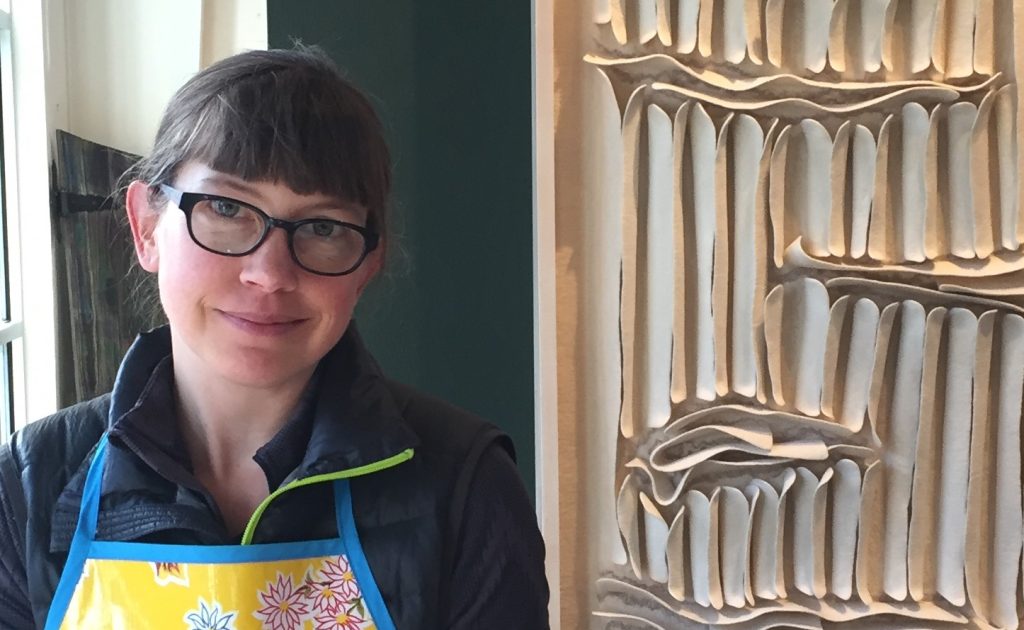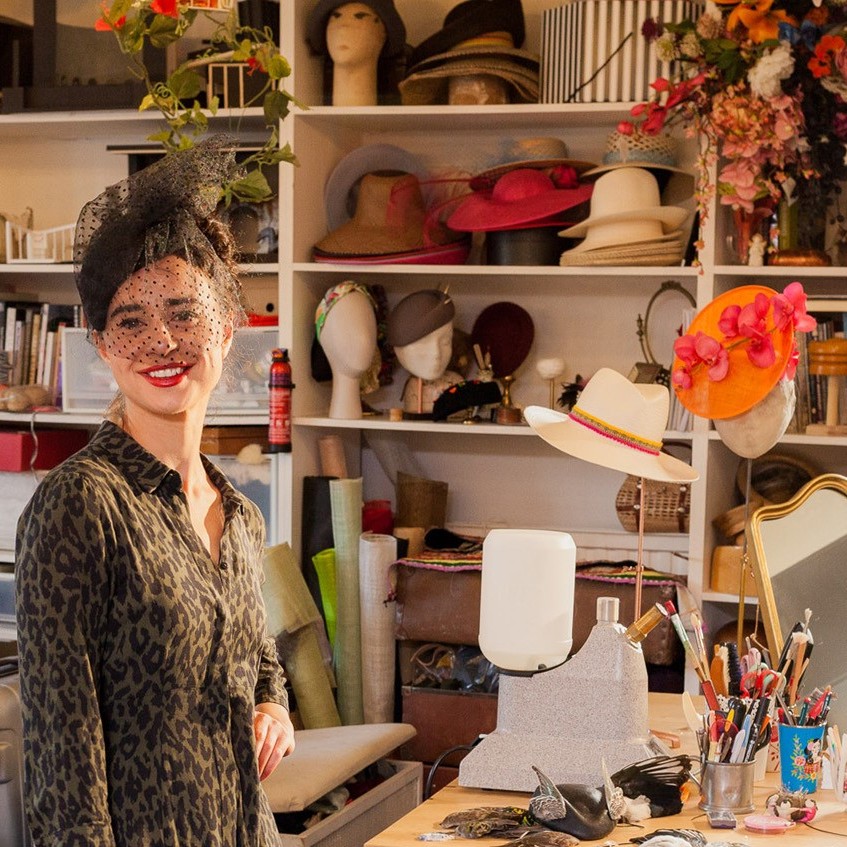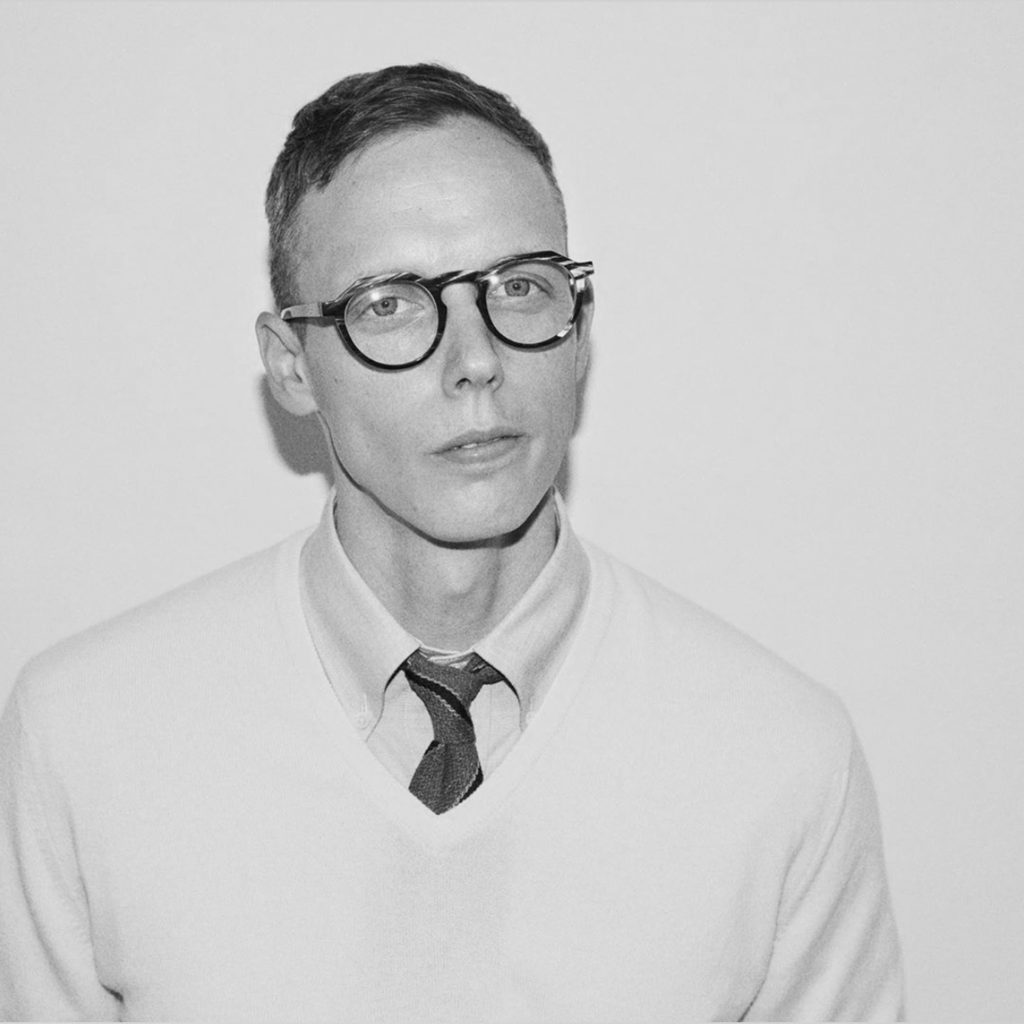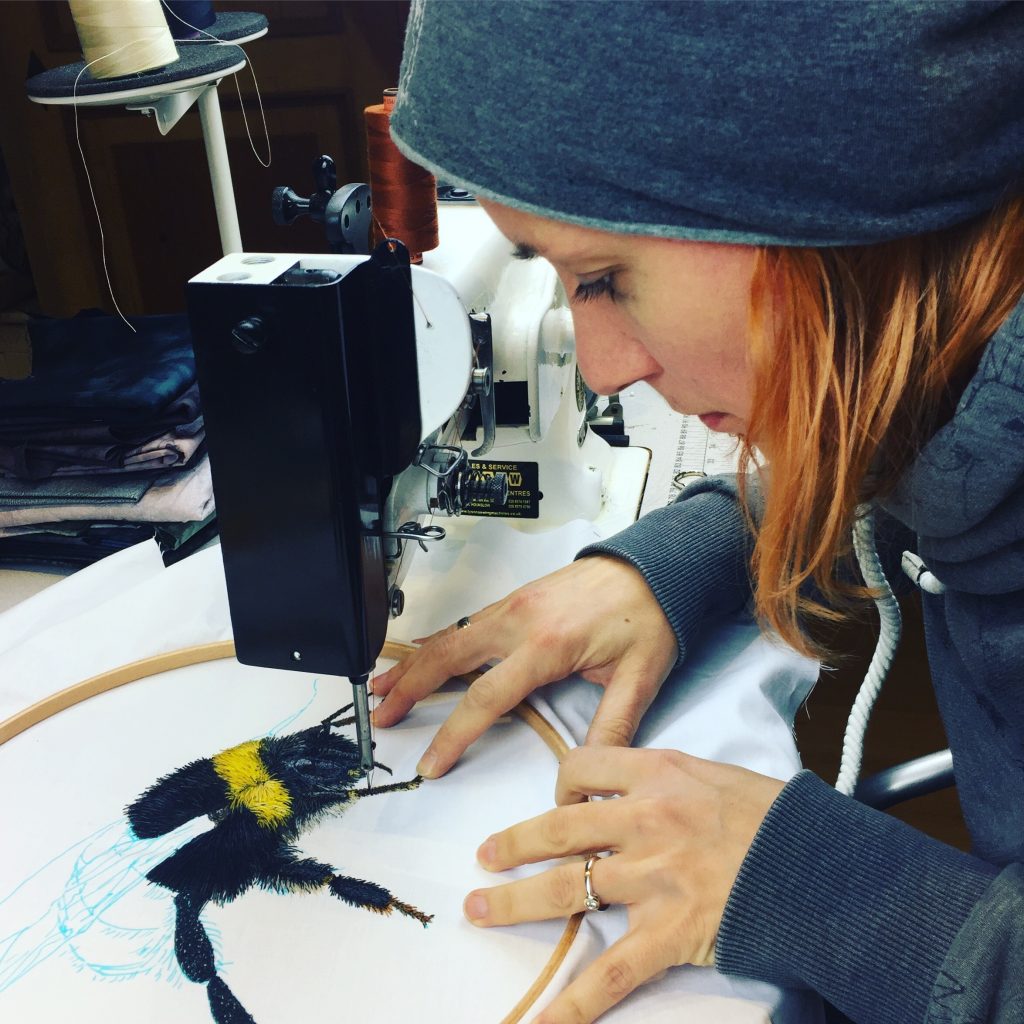Kristy Kun Felt Artist - Oregon, USA
Can you please comment on the statement, ‘Harnessed by the warmth and touch of her hands, wool emerges in a new dimension?’
I really can’t stop my hands from touching and transforming wool. The wild fibers take shape in my dreams, processes own my muscle memory, and the potentialities of sculptural forms flow from every breath of my creative spirit.
My tactile tendencies make it difficult to for me to keep my hands off of wool and other textural materials. It’s a real asset as a felt maker because the process of felting is accomplished as wool fibers respond to the warmth and agitation between my hands. The result is a bonding of fibers and formation of a new, dense sculptural material. This process is assisted with water and a little soap, and the rest is just the simple act of rubbing and coaxing the wool until it becomes felt.

Discuss the ‘magic’ you feel in the process of creating felt?
The magic is in the wool and I feel it at the point in the felting process where the fibers lock together into a tight, dense fabric. This is when the transformation from fiber to fabric takes place and it requires time and patience for the wool to be worked into this new form.
I feel the energy in the fibers as this process happens. Through my hands I am connected to the animals providing the material as well as the artwork itself. I feel it becomes a robust expression of my creative soul by working so closely with my hands.
You mention a background in furniture construction and upholstery. Expand on this and explain how it has influenced your fiber art.
Most of my adult life was spent in a woodshop transforming reclaimed and historic wood into finely crafted furniture. The furniture designs were my partner’s, but the selection and processing of the wood, joinery, construction and finishing were my pursuit. The skills I developed during this period are reflected in obvious ways in my current work, eg the hand crafted frames, the upholstery methods used in mounting the felt, and in some less obvious ways. My process for joining wool fibers and making dry connections before felting is uniquely my own technique and it is the joinery so common in my furniture that has fostered it’s development.
Also, wood itself has influenced my design aesthetic, how I interpret the patterns in nature, and where to push the boundaries of material synthesis. Watching the patterns in grain emerge as the jointer removed crusty layers of history (and finding the right moment to stop and preserve that history) finds it’s way into my dreams… Wood becomes wool and back again until a balance is found between the two and a new design emerges.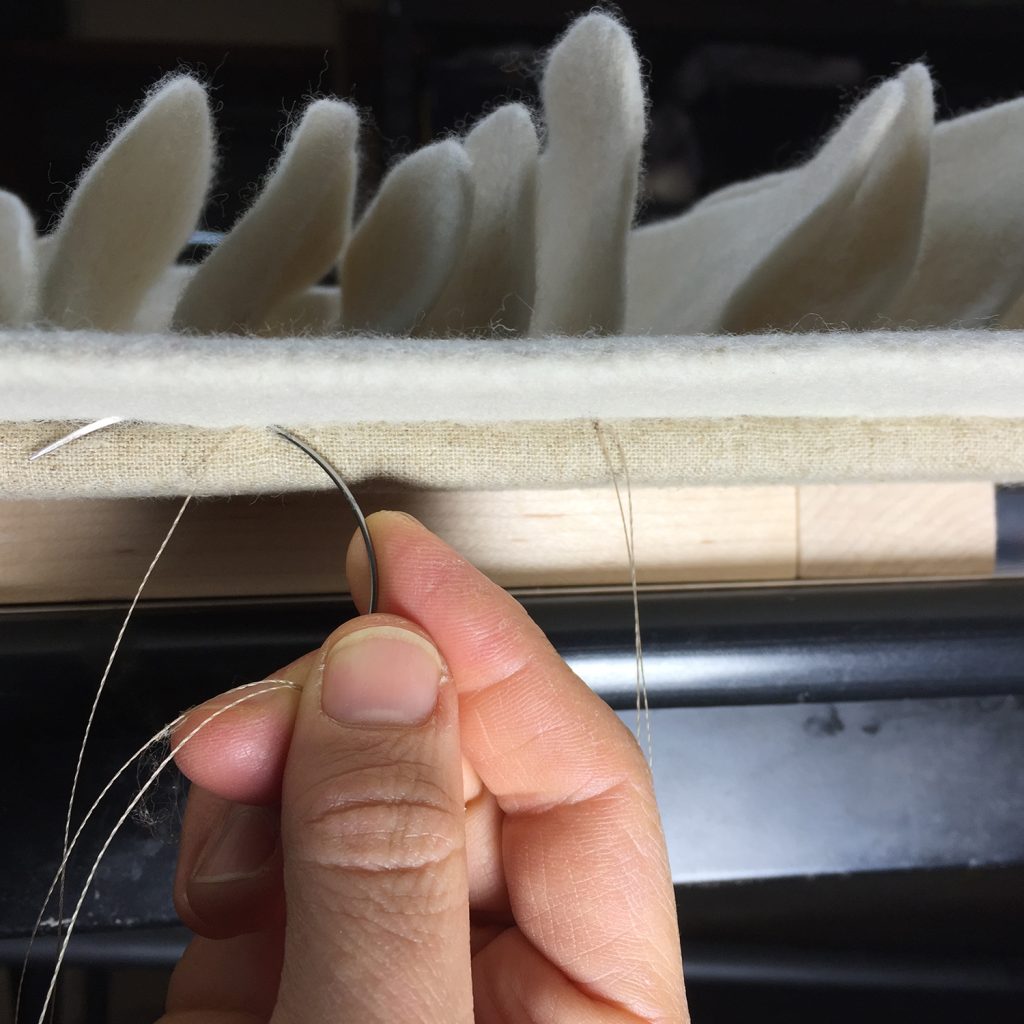
Different wools have different textures, colours and weights, take two very different wools and explain how simply by the sheep/ animal they come from how the finished article changes.
All breeds of sheep produce wool of varying qualities of coarseness/softness and felt-ability. These qualities allow creation of an incredible range of felted goods from the lightest garments to dense, durable, sculptural forms. I am most interested in the sculptural possibilities of wool, but for years I have studied to develop a broad knowledge of how all fibers behave when felted and react alone or together.
I‘ll start with one of my favorite fibers to felt with, Merino Wool. Merino is very popular for apparel fabrics, from outdoor clothing to the finest runway garments, and it is a champion for the wool industry as a whole. If you are not experienced in the fiber arts, you will still know of Merino. What is less known, is the incredible range of wool fibers produced by Merino sheep.
The Merino I work with is a medium wool, in-between coarse and fine. In my wall hangings, Merino is the natural white wool used for the background and projecting textures. This merino felts into a dense sculptural fabric that will hold its shape when steamed and set. My students refer to my style of felting as “hard felt” and this finish would not be possible with the finer Merino wools.
To contrast the smooth hard finish of the Merino wool, I’ve been adding a native (U.S.) coarse wool breed, Navajo Churro, to my most current work. The churro fleece is very straight (not crimpy or curly) and has a dual coat. The shorter undercoat is soft and fluffy and felts very easily. The outer coat looks more like long hair. It is thick and straight and while it will felt, it felts better when it is mixed with the undercoat.
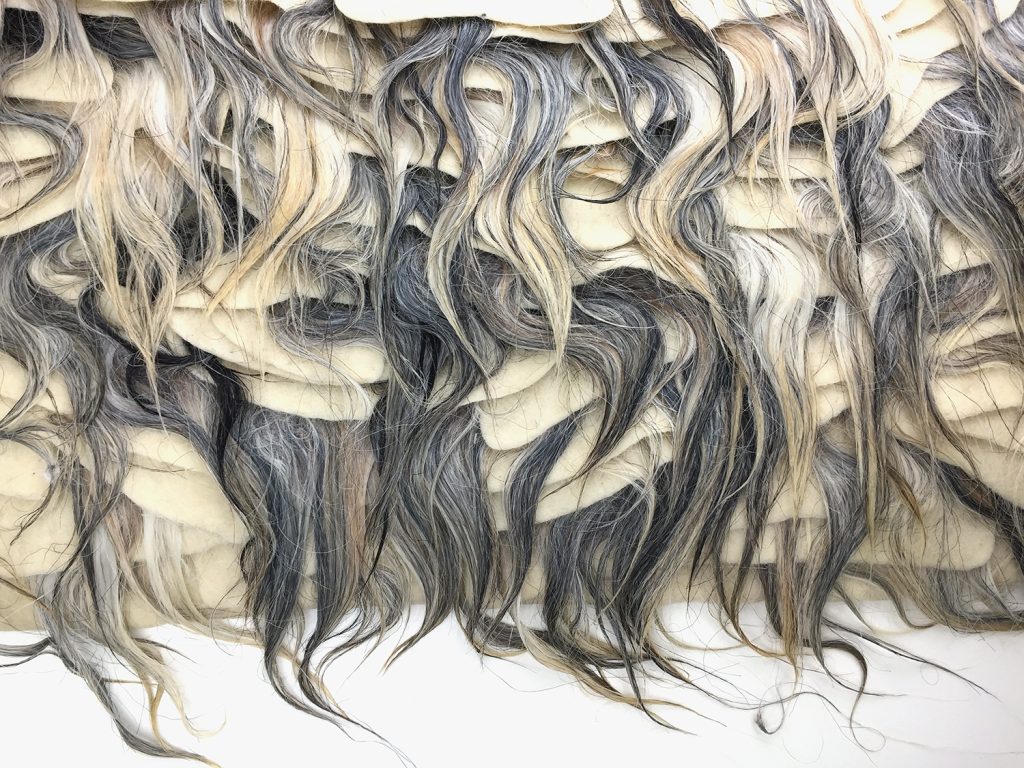
I’ve been using this dual coat felt-ability to create an interesting dichotomy of textures. The wool is positioned between protruding layers of merino and only felted at the base. The long outer-coat fibers are allowed to stay free from the felting process but they are felted in at the base of the artwork with the help of the undercoat fibers.
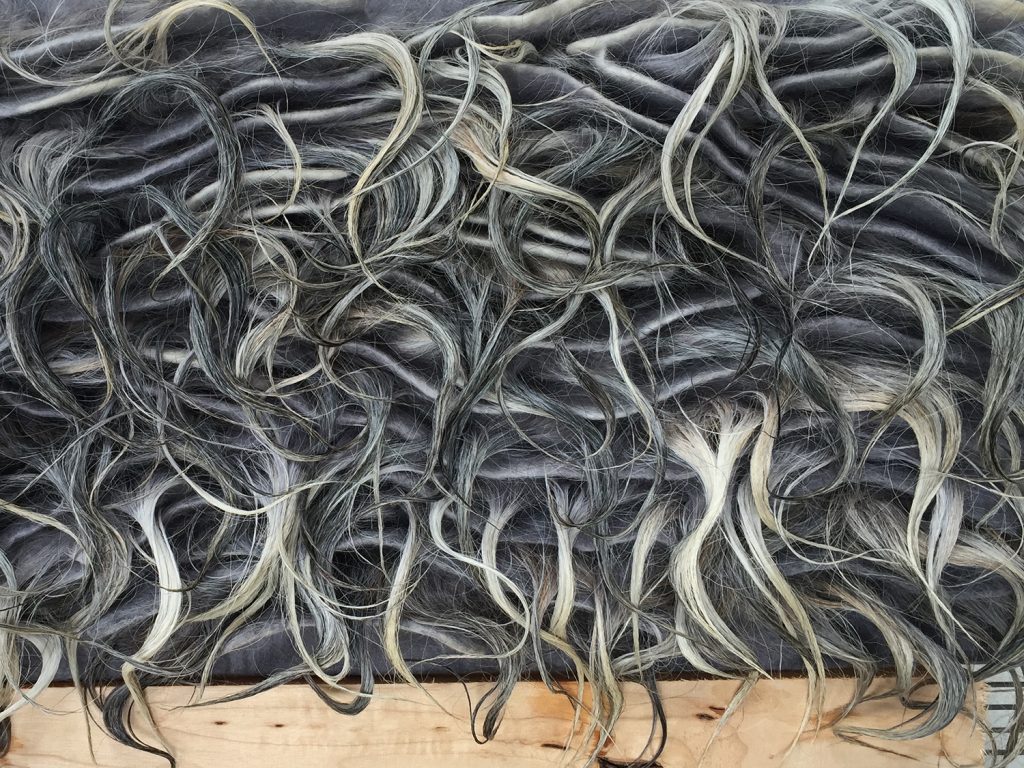
Do you dye the wool yourself?
Yes. Both acid and natural dyes find their place in my work. They are very stable and lightfast on wool, and when a piece calls for colour I weigh my options for achieving it and decide on the most suitable route.
I also work with blended colours that I create using a simple mixing formula for three primary colours. This system of creating colour fascinates me and I use it when mixing dye powder as well as for mixing coloured wool. The formula is based on a ten- part system where each colour blend is formed from a combination of three parts (colours) that will always total ten. For example, in a Red, Gold, Navy blend of 3,1, 4, I will blend three parts red, one part gold and four parts blue. This gives me an incredible colour range from just three simple mill-dyed primaries.
When do you decide to use colour or when to use natural fibres?
Working with the natural colours of the wool is soul soothing. I get lost in the wool when I’m laying out a piece with Navajo Churro fleece and the colours in a single lock are a mix of white, cinnamon, and black. These natural colours speak to me in a very invigorating way and connect me to the animals and the earth they graze. They can be as much of a challenge to balance as dyed fibers, but the result is calming and reverent of the wool rather than forced.
This probably stems from an over-exposure to felt made with commercially dyed wool. Through my business, Opulent Fibers, I’ve sold dyed wool to artists for many years. As I’ve moved away from selling fiber to inspire other artists and into this new phase of finding fiber for my own art, I’m in a bit of a rebellion of mill dyed wool. In order to find a true connection to the raw material I need to immerse myself in the raw state of it, to know the animals as much as possible and work with the natural hues. After this, I might open up to colour again.
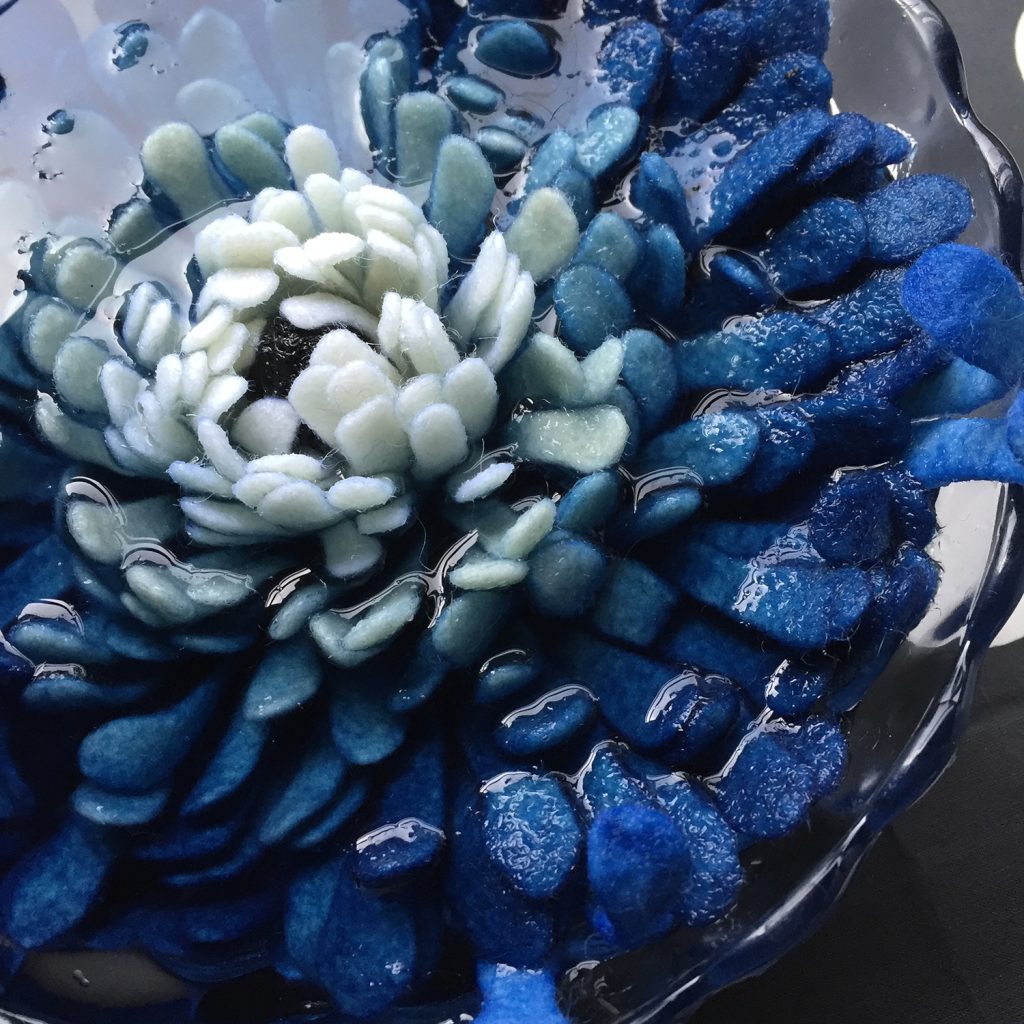
Expand on the appeal of adding other fibres to the wool and the effects this has on the piece.
The addition of plant fibers to wool felt creates contrasting textures and ribbons of movement on the otherwise clean surface of the wool. The process is quite simple… As wool fibers bond together in the felting process, they will grab other materials; Flax, cotton, hemp, silk, to name a few. Through the felting process when wool is bonding and shrinking to form a dense felt, the plant fibers buckle under the force of the wool, resulting in ripples and ribbons of texture.
These contradictory textures are explored in my work quite often. Sometimes the materials will be very similar in tonality and it will take close inspection to discover them. While other times they are announced with a bold colour change and used to create strong lines and movement in the work.
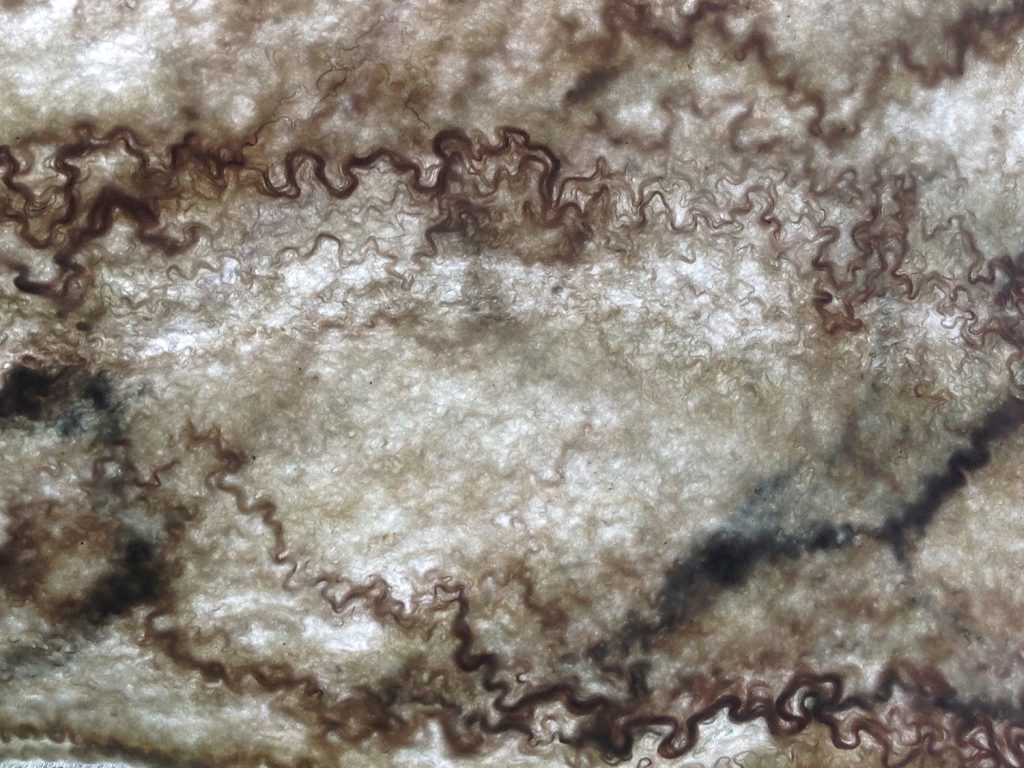
Expand on the rhythm in your work?
I draw inspiration from the environmental transformations and am especially inspired by mycological forms, wood grain and the effects of time and decay on these materials. There is a steady rhythm of change in the patterns, subtle shifts in lines that create texture through birth, fruition, and decay. Formations of water, earth and sky, emerge as if breathing and alive. My hands translate this energy and these textures from nature into new forms using ancient methods and timeless imagery.
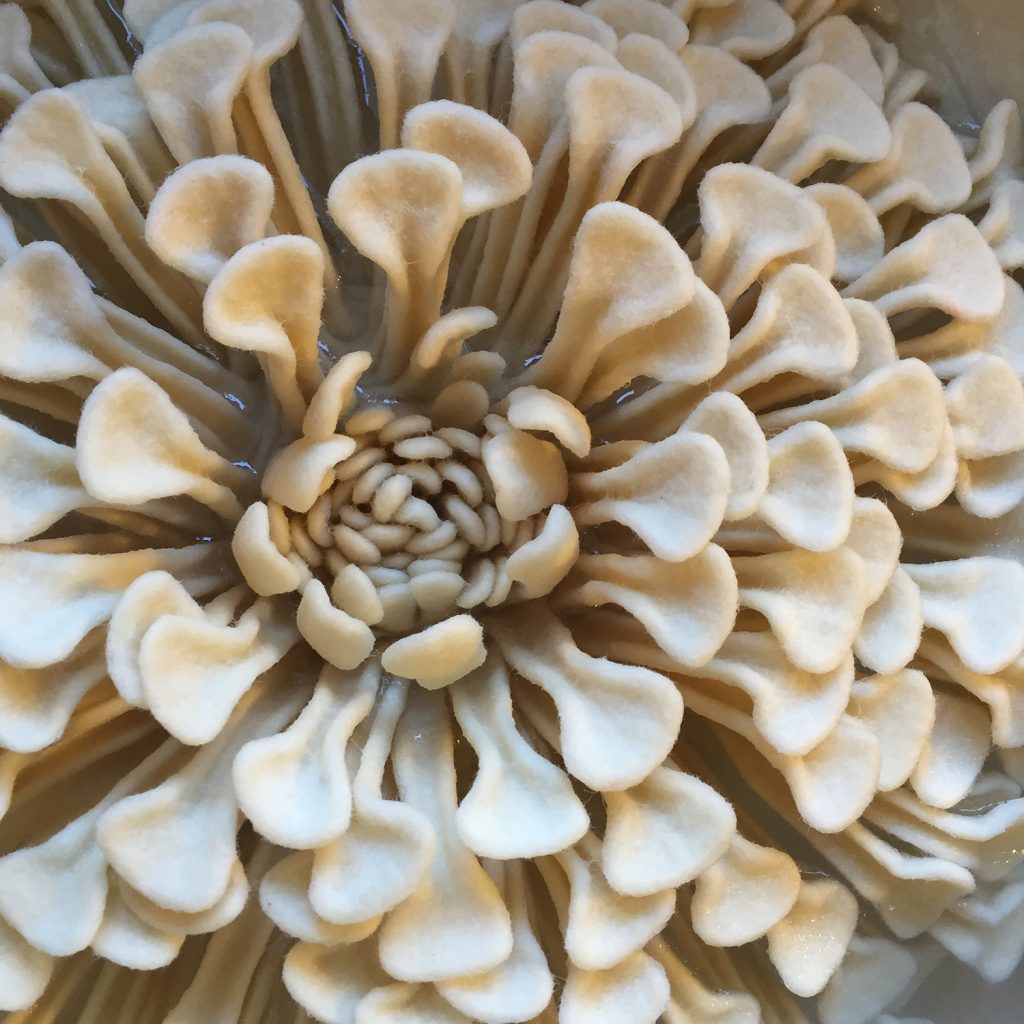
Comment of the tonal quality within one of your natural pieces?
There are many layers to the function of tonality my work. Not only in the felt itself, but additionally in the selection of the wood and finish for framing. In Velleity’s Dance, for example, the felt work contains three fibers working together to create depth through subtle changes in the tint of the wool. The wool for the pods, vines and border is a natural ecru merino, while the ground is a brighter white merino. Within the pods, natural tussah silk was felted on to the surface to create a shade slightly darker than the ecru and add a subtle shimmer to contrast the matte felt.
The frames for most of my white pieces are made from rock maple. The warm quality in the colour of the wood creates a seamless transition from art to frame and I build the frame with a significance and purpose to shelter the felt like a womb, yet let it breathe in the room where it resides.
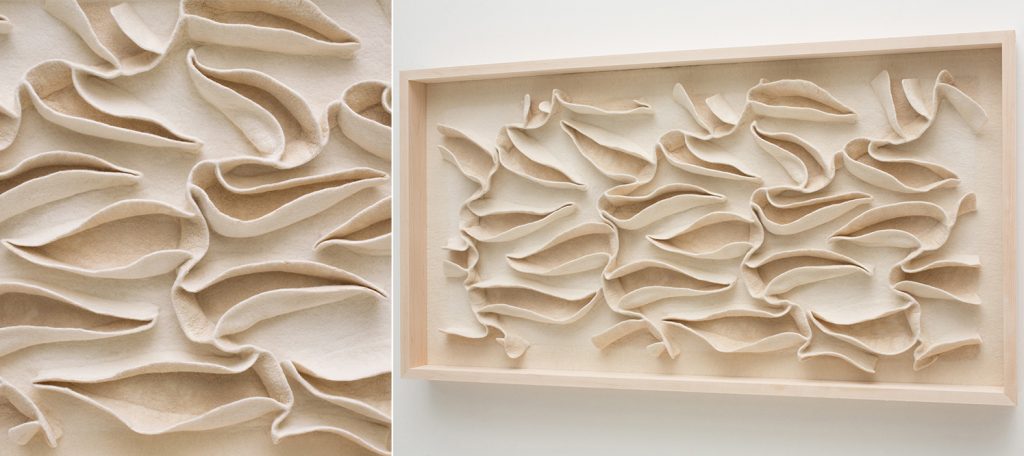
Discuss the size of your 2D felting and how you present completed pieces.
The finished size ranges from 1.5 square feet. to 17 square feet and surface texture can be up to four inches. Mounting and presentation presents an interesting set of challenges when working on such a large scale, with the weight of textural protrusions usually more than the weight background of the piece.
I’ve developed a method of archival mounting for the felt where it is adhered to stable plywood with a layer of heavy-weight acid-free paper between the two materials. It is important to protect all parts of the felt that could come in contact with the wood backing and frame from acids that will leach out of the wood.
Due to the variable thickness in textures from piece to piece, the frames are all very custom. I mill the wood, assemble, and finish the frames here in the studio. Because of the scale of some of them, it isn’t until they are at the photo studio when I can get some distance from them hand have a good look at the work I’ve done.
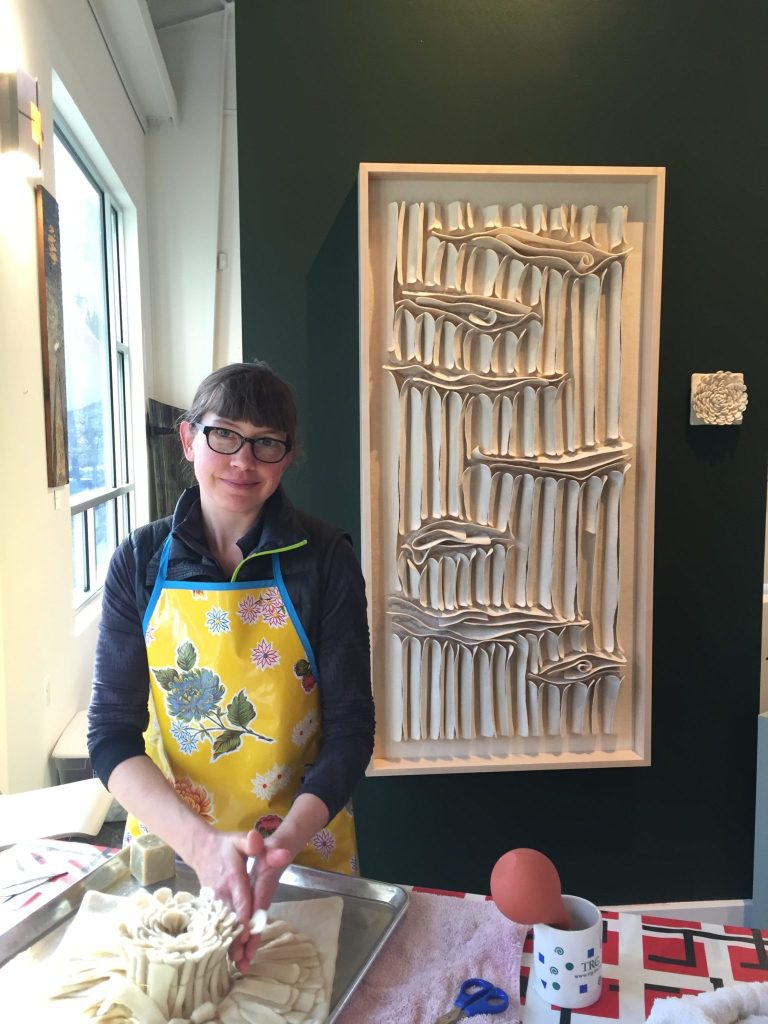
It is July and already you are preparing for five exhibitions in the second half of the year.
Discuss timelines and your work.
This is a very interesting question to think about because timelines affect me differently through the various stages of creating a piece. I often spend a hundred hours on a large piece.
When I begin, I am most successful working with a goal of completion, rather that a deadline or commitment. With a commitment, I find my creativity and freedom to listen to the materials the way I need to are stifled and replaced with rules and boundaries, both physically and mentally. This stress is the worst thing I can subject myself to as an artist and it can cause me to hibernate from the studio rather than feel the excitement to work there that I need. For the upcoming season of exhibitions, I’ve started well in advance to allow time to listen to the wool as I like to and respond as it changes throughout my process.
Near the completion of a piece, the deadline comes into play quite positively. After the work of felting and shaping/ finishing, a whole new process begins. The fiber studio shifts into a wood-shop and I mill the wood and build the frames for the piece. I call the photographer as the frames are in production and set an appointment for a shoot. This becomes the final deadline. There may be a show the piece is destined for the following week, but the deadline always needs to be that photo shoot and I push very hard to make the date… Putting very long days in the studio to get everything finished properly. With this final, intense push of work for completion I will be considerably exhausted and might sleep for an entire day after the shoot. This pre-deadline gives me ample time for recovery before the show.
I’ll also mention there is one timeline inherent with the craft of felting that is not self-imposed. Once a piece goes into the “wet” stage, the demands of time become very strict and I cannot step away for more than a day without concern for the well being of the fabric. I am careful not to start the wet felting stage unless I have a full week to commit to it’s completion. In the case that something goes wrong, much energy goes into rinsing the wool to preserve it until the time is available to finish.
The amount of work you need to produce.
I plan to have between 12 and 15 pieces going into the season. A few of the shows are set up with a gallery environment and for each of those I will take only three or four pieces. However, there is one where I will be filling a booth… And this does feel a bit daunting! I’m glad to have the push to produce several pieces for the bigger show, Art in the Pearl, here in Portland, OR. I would be surprised (well, surprises are okay!) if I sold all of the work, so there will be inventory to draw from for the rest of the season. This will take a lot of pressure off for the other events and I will be able to focus on new work for the first of the year. Of course, it will be a very busy summer in the studio preparing!
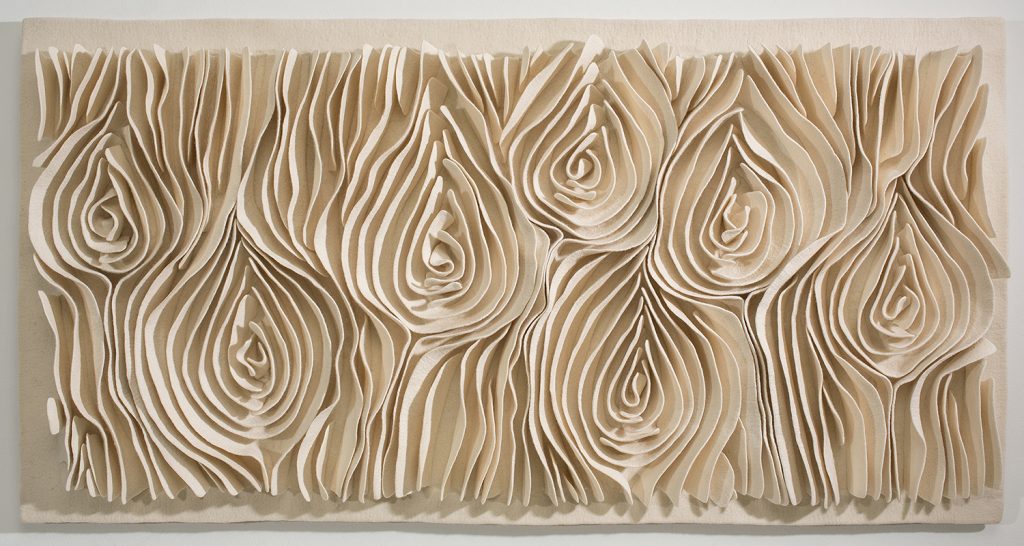
The value of being involved in exhibitions for the growth of your own artistic endeavours?
I feed off of this type of exhibition where I am placing myself with my work before the public for a few very busy days of sharing. For almost twenty years, I’ve been building trade show booths and exhibiting at fine craft shows (previous life building furniture). Creating a display feels like building a small house that represents who I am and helps explain my creative vision. It’s exhausting work talking about my felt and explaining a craft which is not well understood by the public. After a few days, we say goodbye to old friends, pack it all up and drive home to start again. The drive is time to reflect on the public’s response and my own observations of the work I’ve displayed. When I return to the studio I am a chrysalis transformed… Ready to start on the next adventure.
How physically demanding is felting?
Felting large work requires physical and mental strength. During the layout phase of a large work, there is an incredible amount of reaching, usually from very awkward positions that must be held for long periods of time so not to smash the previously positioned material. I liken it to and artistic form of extreme yoga.
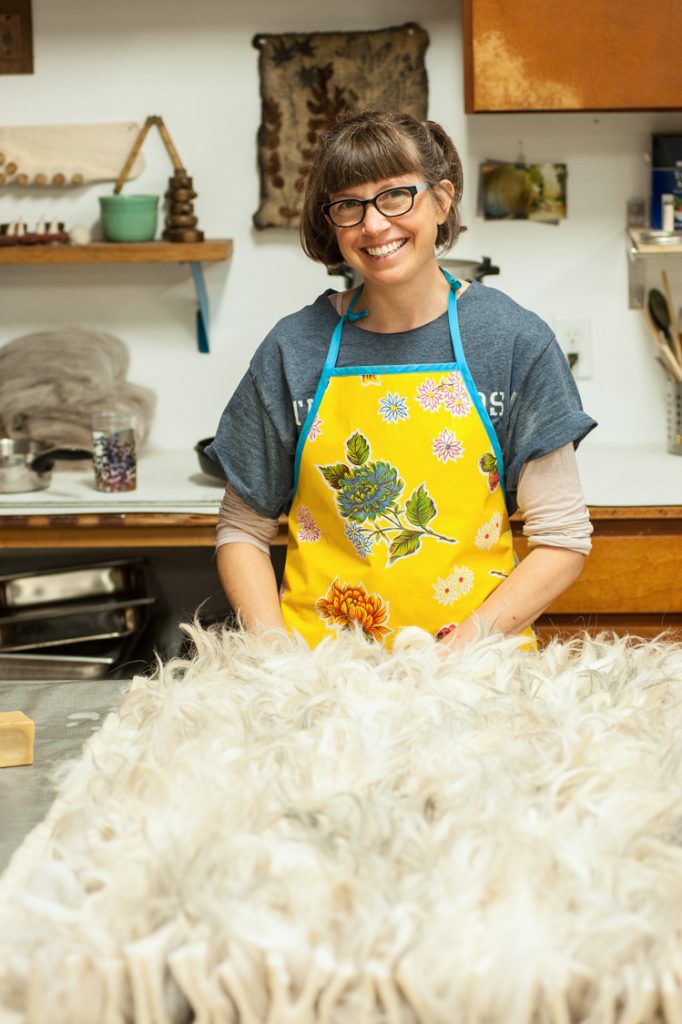
Last year I began a piece that was so large there was no possible way to reach the center without damaging the peripheral layout. I started thinking that it would work much better if I could hover over the wool as I was positioning it, so I built a giant glider that holds me just inches over the top. It looks like an eight foot long skateboard.
A later phase of the process, the wet felting, requires a different kind of strength and endurance. Because of the highly raised textures in my work, my process is a different from traditional felt making. The entire piece must be carefully worked through by hand several times, requiring a fair amount of arm, hand and upper body strength. This is probably the most physically demanding part of my work and it will take several days to complete on a large piece. Frequent breaks and afternoon naps keep me from injuring myself.
You have a wonderful Studio – can you give a few of your favourite aspects of your studio.
Spaciousness, giant tables, fresh air, and the close proximity to home are the best part of my studio. I’ve created the work space in a metal barn behind my house. The large doors open to an area I use for washing wool and where I set up an outdoor dye and steam kitchen in the summer months. I’m surrounded by lush greenery, ridiculous chickens, a dog bouncing around with his toys, and my family. Some days it really feels like I’m living in a dream.
The tables came from a second hand architectural supply store here in Portland. They are 12’ long lunch-room tables that can fold in the center and go into a vertical position on wheels. If I need floor space it is easy to get them out of the way and if I need a larger layout table I can put them together and make something enormous… There are ten of them in the studio!
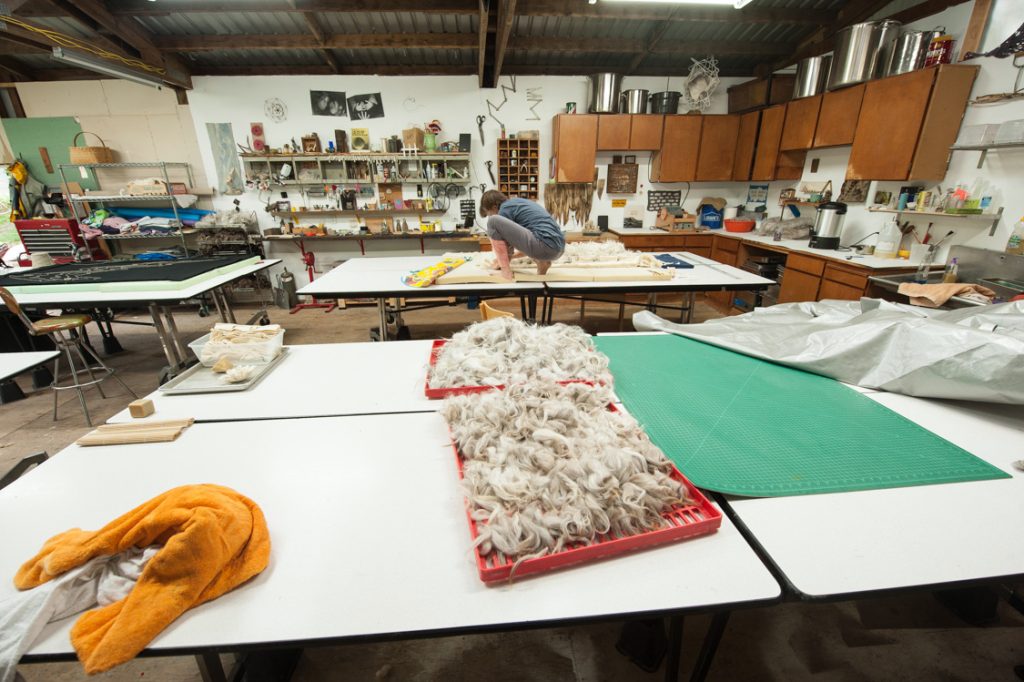
Within your classes you pass on your knowledge and techniques can you expand on your classes?
I teach workshops on beginning to advanced techniques in sculptural felting. Teaching processes that I am using in my own work is incredibly rewarding as I continue to advance my own vision through conversation and observation with my students. I also encourage them to create outside of their boundaries and when they ask to push the work a little beyond the course curriculum I do my best to guide them. If they have proven an understanding and technical finesse with the craft it’s productive to set them free to explore new possibilities of using the materials and techniques. It is at this point where we are all exploring together that I find most rewarding for teacher and student.
Discuss the importance of the Felting Communities and how it helps you and in what ways you have been able to respond through this group?
It is more like a family than community. Through felting we share an unusual bond. I suppose it is based on the trust we have in each other as artists that understand an otherwise often misunderstood craft. Also, we are a relatively small group (if you consider the number of wood turners in the world, or even blacksmiths) and we stay in touch through social media and email, plus gather as often as we can to share, learn, and catch up.
My “felting family” is the reason my art exists. When I pursued textiles as a career seven years ago and began distributing fiber to artists and attending retreats to sell materials, they welcomed me and were interested in my offerings. When I found instructors to bring to the U.S. and teach innovative techniques, they came for classes. And, in this past year, as I’ve transitioned from the business of selling wool to creating my own work and teaching, they have enthusiastically supported the changes.
Through their interest and support I am encouraged to push the boundaries of my own work. As I do this, I share the results through email campaigns and social media, develop new ways to teach (I’m now offering home workshops with online support), and expose the public to our craft in an effort to create broader acceptance and understanding of artists working in this medium.
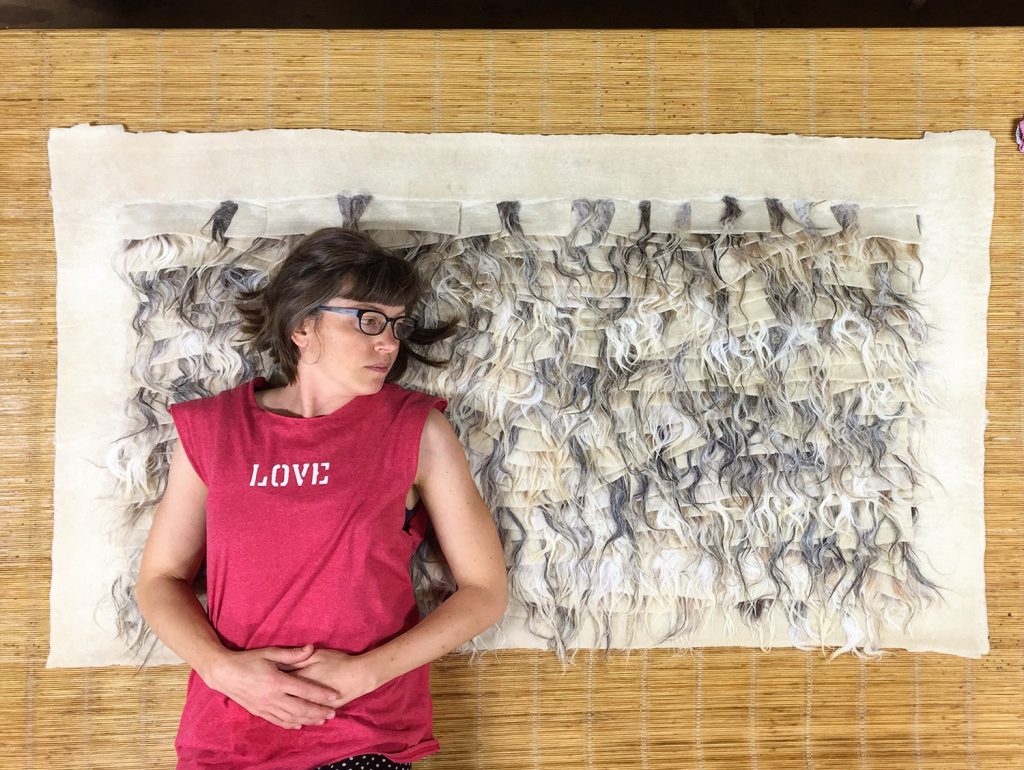
How important is ‘tactile’ in felting?
For me, it is very powerful. Not only is my entire process of felting “through the hand”, the final stages of shaping and forming the finished sculptural felt is a sensual process. My desire for the finished pieces is that they are appreciated this way in the home of the purchaser… That, from time to time, they put their hands between the raised fins of the wool and feel the warmth and life in it, connecting to the process and the animals and the earth from which they graze… As I do in the creation of the art.
Contact details.
Kristy Kun
opulentfibers@me.com
Kristy Kun, Oregon, USA
Interview by Deborah Blakeley, July, 2016
Think a colleague or friend could benefit from this interview?
Knowledge is one of the biggest assets in any business. So why not forward this on to your friends and colleagues so they too can start taking advantage of the insightful information the artist has given?
Other artists you may be interested in:

